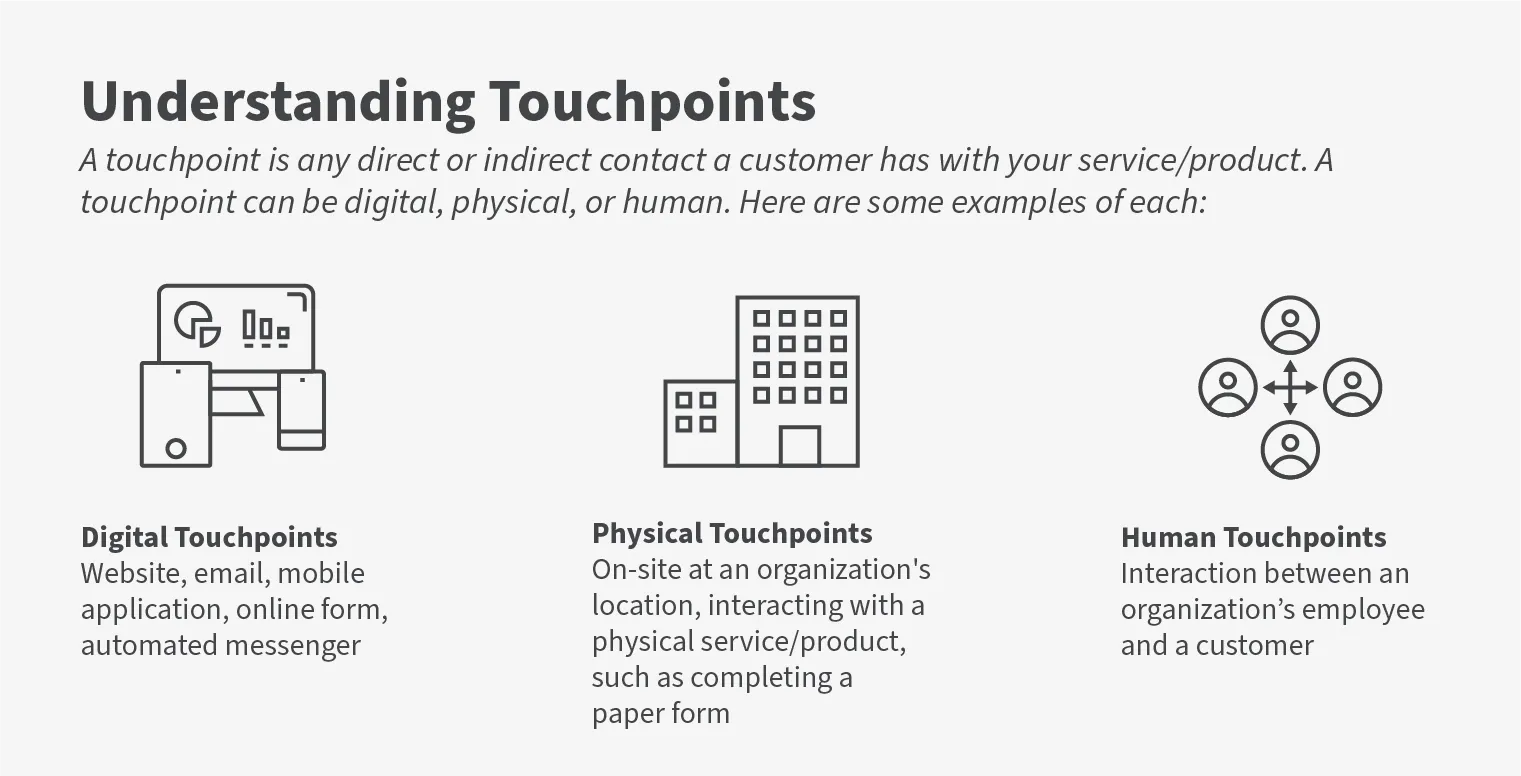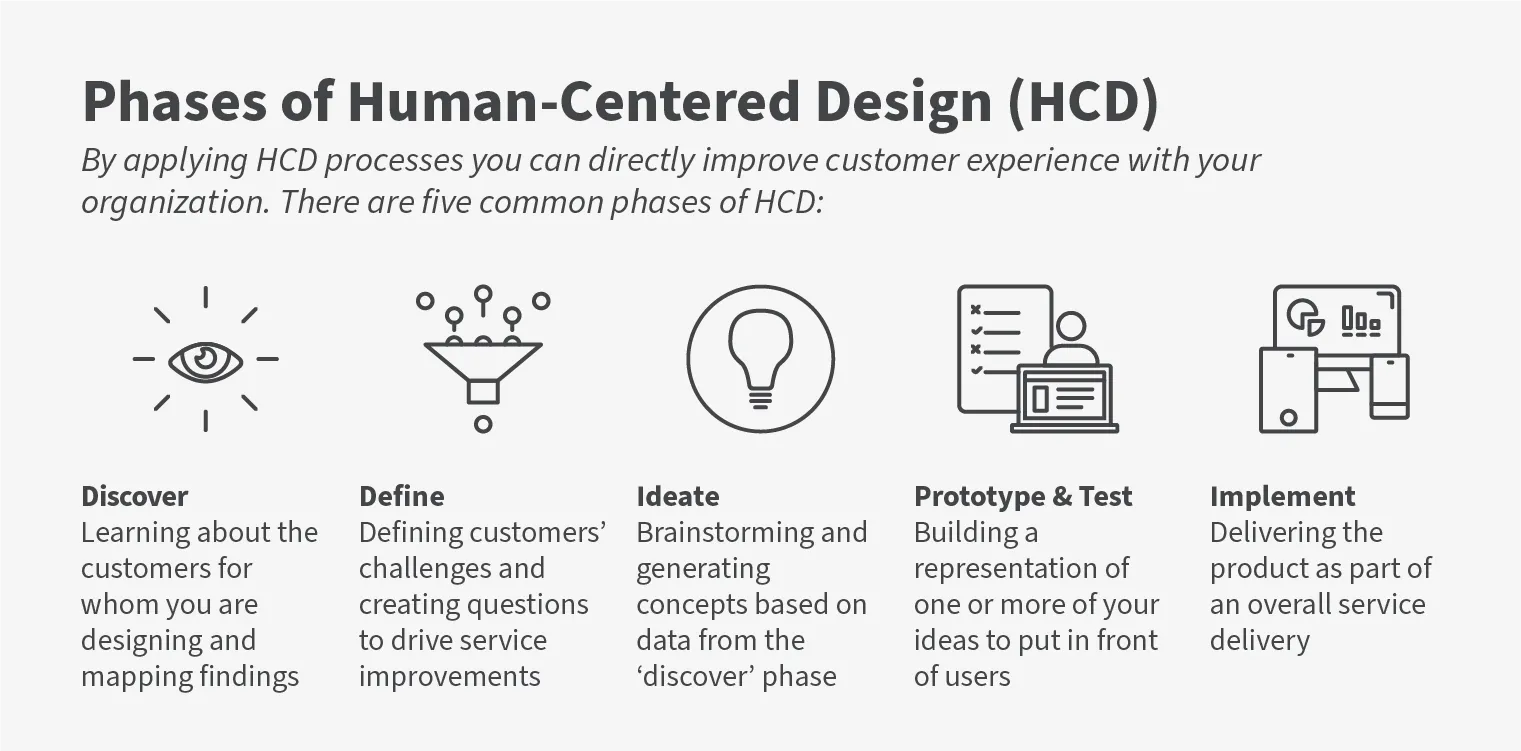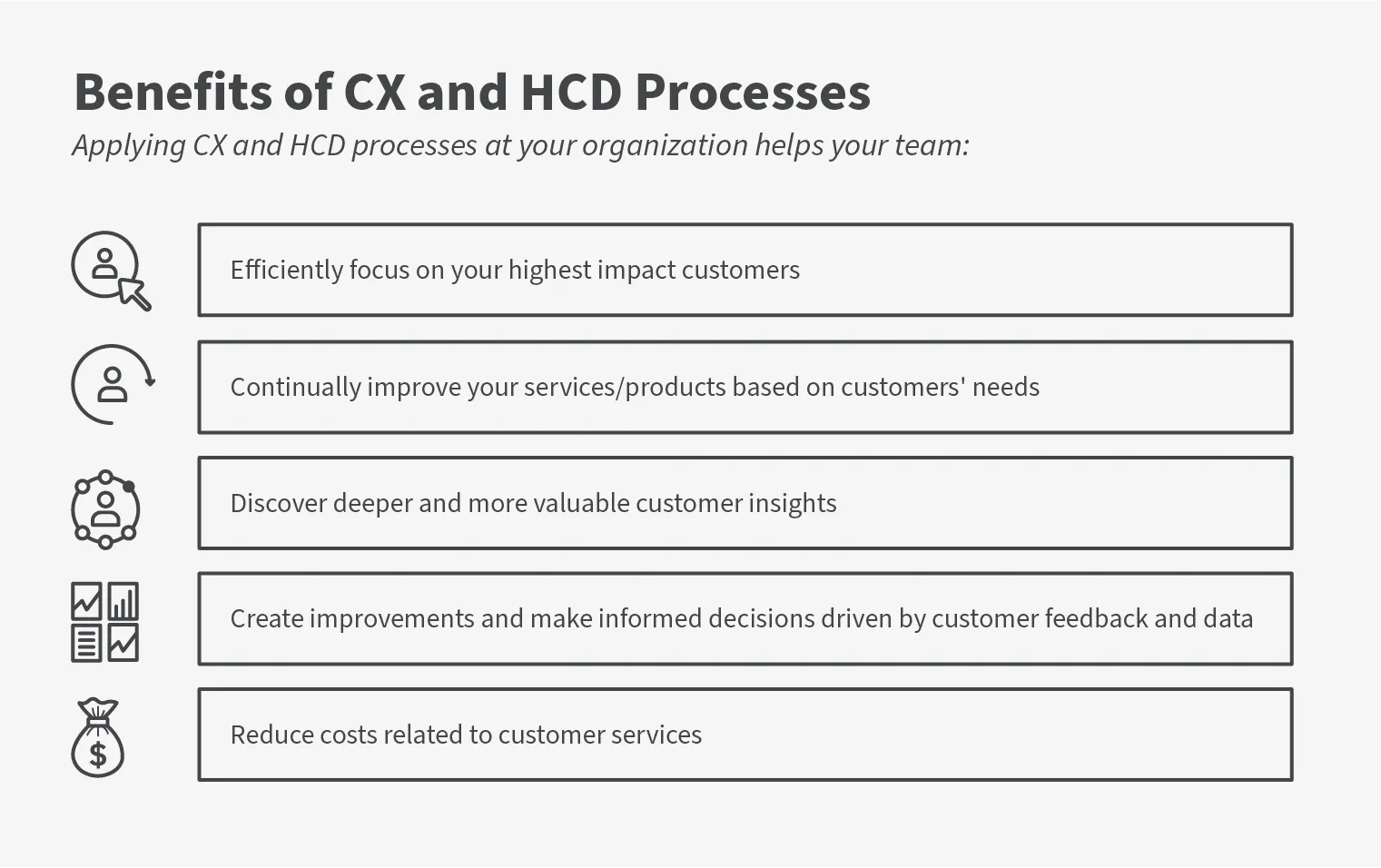Intro to CX Lesson | 15 Minutes
Learning Objectives
- Understand what customer experience is
- Understand how customer experience uses human-centered design
- Understand the benefits of customer experience
DHS interacts with millions of people each day as part of our mission to safeguard the American people. By placing people at the center of everything we do we can deliver the value, service, and efficiency that the public expects and deserves.
So, how are we placing people at the center of everything we do and what are we doing to understand and meet their expectations?
For us at DHS, it all begins with understanding the power of customer experience and applying the human-centered design process.
What Is Customer Experience (CX)?
Customer experience (CX) is the sum total of all interactions between an organization and a customer.
Interactions are made up of touchpoints. A touchpoint is any direct or indirect contact a customer has with your service/product. A touchpoint can be digital, physical, or human. Here are some examples of each:
- Digital touchpoint: Website, email, mobile application, online form, automated messenger
- Physical touchpoint: On-site at an organization's location, interacting with a physical service/product, such as completing a paper form
- Human touchpoint: Interaction between an organization’s employee and a customer
Here’s an example of a service with multiple touchpoints.
Touchpoints Example
A customer visits TSA website on their smartphone to check what kind of items can be in a carry-on bag. Then, they call the TSA Contact Center to confirm what they read on the website. On the day they are traveling, they go through an airport security checkpoint and read a sign for what kind of items can and cannot be in a carry-on bag. Finally, they interact with a Transportation Security Officer that checks their bag as they go through the airport security checkpoint.
How many touchpoints did the customer have? How many were digital? How many were physical? How many were human?
There are four total touchpoints:
- Customer checking TSA’s website = Digital touchpoint
- TSA Contact Center phone call = Human touchpoint
- Reading a security checkpoint sign at the airport = Physical touchpoint
- TSA agent interaction during a bag check = Human touchpoint
Customer experience practitioners research, document, and analyze each individual customer touchpoint to understand their journey as they access a service/product.
Breaking down a customer’s journey helps service and product teams understand the positive interactions, negative interactions, and a customers’ overall impression and satisfaction with your organization leading to a better understanding of your customers and their experience.
When analyzing your customer’s journey, you should highlight any touchpoint along their journey that needs improvement. Those highlighted touchpoints become your starting point in the iteration process to make improvements to your services/products that will enhance your customers' experience.
CX and Human-Centered Design (HCD)
Human-centered design is a problem-solving framework that brings together the ideas and expectations of organizations and their customers to create services and products that are more effective and efficient in serving their customers’ needs.
In HCD, design teams involve customers throughout the design process through a variety of research and design techniques, to create highly usable and accessible services/products for them. By applying HCD processes you can directly improve customer experience with your organization.
There are five common phases of HCD:
- Discover (empathy, research & map): Learning about the customers you are designing for and mapping their experience relative to your service/product
- Define: Defining your customers’ challenges and creating questions to drive service improvements based on your insights from the ‘discover’ phase
- Ideate: Brainstorming and generating concepts based on data from the ‘discover’ phase
- Prototype & Test: Building a representation of one or more of your ideas to put in front of users
- Implement: Delivering the service/product
By incorporating HCD into your organization’s service or product lifecycle, you can gain a better understanding of your customers and that will help you create services/products that meet your customer’s needs and expectations.
How Will My Organization Benefit from Investing in CX?
Our government is of the people, by the people, and for the people. At DHS, we are focused on creating a customer experience that lives up to that ideal every time the public interacts with one of our services or products.
By taking a customer-centric approach to the delivery of our services and products, we can increase the trust and confidence the public has in DHS and improve our employees' experiences.
Applying CX and HCD processes at your organization helps your team:
- Efficiently focus on your highest impact customers
- Continually improve your services/products based on customers' needs
- Discover deeper and more valuable customer insights
- Create improvements and make informed decisions driven by customer feedback and data
- Reduce costs related to customer services and invest in preventative measures related to creating a positive customer experience before encountering a pain point interaction
And, as DHS increasingly prioritizes CX and HCD, on a larger scale we will see:
- Improved national security mission outcomes
- Increased equity, accessibility, and transparency in DHS services
- Delivery of timely benefits and services
- Heightened credibility and trust
- Reduced training requirements, requests for more information, and submission errors
- Achieved cost savings and avoidance, and increase revenue from paid services
- Improved employee engagement
The use of CX at your DHS Component is vital to achieving a better overall experience for both customers and employees.
In Summary
When your organization applies HCD practices to CX you are creating an opportunity to strengthen your relationship with your customers by putting their needs and expectations first when designing and iterating your services/products.
At DHS we are committed to our mission of placing people at the center of everything we do. By applying HCD practices to CX we are able to carry out our mission of safeguarding the American people and delivering the value, service, and efficiency that the public expects and deserves.



